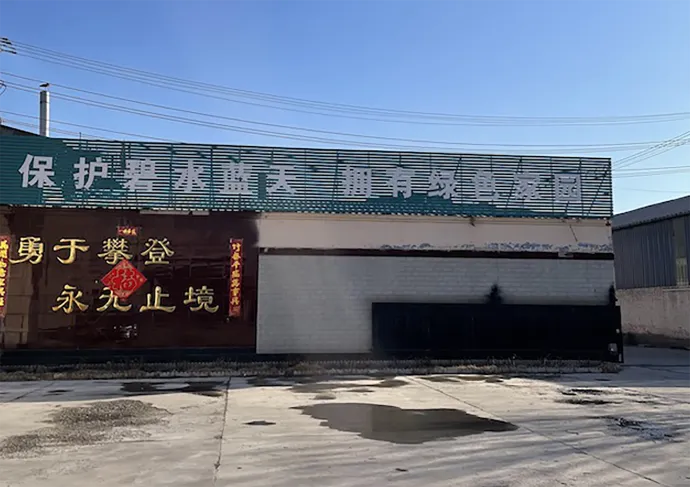- Afrikaans
- Albanian
- Amharic
- Arabic
- Armenian
- Azerbaijani
- Basque
- Belarusian
- Bengali
- Bosnian
- Bulgarian
- Catalan
- Cebuano
- Corsican
- Croatian
- Czech
- Danish
- Dutch
- English
- Esperanto
- Estonian
- French
- German
- Greek
- Hindi
- Indonesian
- irish
- Italian
- Japanese
- Korean
- Lao
- Malay
- Myanmar
- Norwegian
- Norwegian
- Polish
- Portuguese
- Romanian
- Russian
- Serbian
- Spanish
- Swedish
- Thai
- Turkish
- Ukrainian
- Uzbek
- Vietnamese
ສ.ຫ. . 01, 2024 09:06 Back to list
Exploring the Benefits and Applications of Mineral Fiber Board in Construction and Insulation
The Versatility and Benefits of Mineral Fiber Board
Mineral fiber board, often referred to as mineral wool or stone wool board, is a versatile and sustainable building material widely used in construction and insulation. Composed primarily of natural minerals and recycled content, mineral fiber board offers outstanding thermal and acoustic performance, making it a popular choice for both residential and commercial applications.
Composition and Manufacturing
Mineral fiber board is made primarily from basalt rock and recycled slag, a byproduct of steel production. The raw materials are melted at high temperatures and then spun into fine fibers. These fibers are then combined with a bonding agent and formed into boards. The result is a lightweight, yet strong product that exhibits excellent dimensional stability. The manufacturing process is energy-efficient, as it utilizes recycled materials, contributing to its sustainability credentials.
Thermal Insulation Properties
One of the significant advantages of mineral fiber board is its superb thermal insulation properties. It has a high R-value, which means it effectively resists heat flow. This is essential for energy conservation, especially in climates with extreme temperatures. By keeping buildings warmer in the winter and cooler in the summer, mineral fiber board significantly reduces heating and cooling costs, contributing to long-term energy savings for homeowners and businesses.
Fire Resistance
Mineral fiber board is inherently non-combustible, making it an exceptional choice for projects requiring fire safety compliance. It can withstand high temperatures without releasing harmful fumes or igniting, making it suitable for use in commercial buildings and industrial settings where fire safety is a top priority. In many building codes, mineral fiber insulation is required for certain applications due to its fire-resistant properties.
mineral fiber board

Acoustic Performance
In addition to thermal insulation, mineral fiber board excels in sound absorption. Its dense and fibrous structure helps to reduce noise transmission between rooms and floors, making it ideal for applications where acoustic comfort is essential, such as in schools, offices, and multi-family housing. By improving sound insulation, mineral fiber board enhances the overall comfort and livability of spaces.
Moisture Resistance
Mineral fiber board also demonstrates good moisture resistance, limiting the risk of mold and mildew growth. This is particularly beneficial in areas with high humidity or where water exposure is a concern. The material can effectively manage moisture, ensuring that the integrity and performance of the insulation remain intact over time.
Environmental Benefits
Sustainability is a key hallmark of mineral fiber board. The use of recycled materials in its production not only reduces waste but also diminishes the demand for new raw materials. Additionally, mineral fiber boards are fully recyclable at the end of their lifecycle, contributing to a circular economy. Their energy efficiency during use also means that buildings insulated with mineral fiber board have a lower environmental impact, aligning with green building practices.
Conclusion
In conclusion, mineral fiber board stands out as a remarkable material in the construction and insulation industry, offering a myriad of benefits. Its thermal and acoustic insulating properties, fire resistance, and moisture management capabilities make it an invaluable asset for a wide range of applications. Furthermore, its sustainable manufacturing process and recyclability align with the growing trend towards eco-friendly building materials. As the construction industry continues to evolve, mineral fiber board is poised to play a crucial role in creating energy-efficient, safe, and comfortable environments for all. Whether you’re building a new structure or upgrading an existing one, considering mineral fiber board as an insulation solution is certainly a wise choice.
-
Transform Interiors with PVC Gypsum Ceiling: A Stylish, Durable, and Moisture-Resistant SolutionNewsMay.19,2025
-
The Smart Interior Upgrade: Discover the Durability and Versatility of Gypsum Ceiling Access Panel SolutionsNewsMay.19,2025
-
The Smart Choice for Interior Design: Discover the Value of PVC Gypsum Ceiling SolutionsNewsMay.19,2025
-
Mineral Fiber Ceiling Tiles: The Smart Blend of Performance and AestheticsNewsMay.19,2025
-
Mineral Fiber Ceiling Tiles: The Superior Choice Over Gypsum for Sound and Fire SafetyNewsMay.19,2025
-
Mineral Fiber Ceiling Tiles: Eco-Friendly Strength and Style for Every CeilingNewsMay.19,2025







